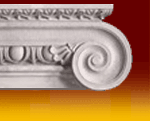A Brief History of the Abbey of
Christ the King
The
exact date of the founding of the Abbey of Christ the King is a matter of some debate. Can it be held to have begun when
in early 1927 John and Jessie Ward were first called into the presence of Christ and asked to Prepare the Way for His Return?
Or should we date its beginning from the first meetings of those who were later to become the founding members?
Until
her death in 1965, Jessie Ward, tended to see the year 1929 as the year in which "The Work" began[i], but others regard the day on which the little community moved into Hadley Hall, 24th June 1930, as the true Foundation
date of the Abbey of Christ the King
Certainly
from that time onwards there was a tangible entity in existence that was dedicated to preparing the world for the Return of
Christ, an entity which was is still in existence, having outlasted all of its founding members by many years. (The last founder, Elizabeth Chamberlain,
died in 1985). This itself is a very significant
fact, for the first major test of any work comes after the death of its Founder, and the vast majority of organisations do
not long survive that first testing. The Abbey of Christ the King has.
Of
course, it can be argued that the fact that John Ward did not act alone in founding what he usually called simply "The Work",
was itself a powerful factor in ensuring that it survived his death in 1949. Certainly the leadership shown by his widow,
Jessie Ward from then until her own death in 1965 kept the community in existence during a period of intense trials, both
spiritual and material, whilst the fact that the youngest of the Founders, Elizabeth Chamberlain (1900 - 1985) lived to the
ripe old age of 85 meant that the tangible link with its beginnings was retained within the community until that time.
It
can also be argued that what was originally called the Abbey of Christ the King has been significantly changed in form since
its early beginnings, and this is at least partly true, for today there are many groups that claim to preserve at least some
of its original ideals. Nor have these been official foundations of an original Mother House as would be expected of a "normal"
religious Order, despite the fact that Ward himself seems to have expected the Work to spread in some such way[ii].
However,
the later history of the many facets of the Work founded by Ward is a major work in its own right, and in this brief account
we shall merely concern ourselves with its early years when it was led in person by J.S.M. Ward himself.
Early Years within the Anglican Church
Taking June 24th 1930 as its foundation date, the Abbey
of Christ the King spent its first five years as an officially-recognised part of the Anglican Church. Nor should this surprise
us, for with Ward himself, together with most of his followers coming from an Anglican background, they turned naturally to
the Church of their ancestors. However, despite his persistant efforts to do so, Ward was never able to persuade
the Anglican authorities to ordain him as a priest. Thus, even at the beginning, he was no traditional Anglican clergyman.
He preached regularly about the Second Coming of Christ, delivering the Message that he believed himself to have been
given and he also promoted other ideas that were not generally accepted by the Establishment, such as the Doctrine of Reincarnation
and a belief that the Holy Spirit is the Female Aspect of the Godhead.
At
first, the little community was just that and no more. Lacking any collective income but including many qualified teachers
it soon commenced to operate a small school, St Michael's College, the fees of which provided its main income in the early
years. Remembering this period in later life, Jessie Ward, once described how the school came into being thus.
"The
Master[iii] said that as we needed an income, we had better start a school, and we felt with God behind it, the school was sure to be
a financial success, but it wasn’t – we only barely made enough to survive and eventually it was closed down”.
Nevertheless,
with the benefit of hindsight we can see the real reason that the school was permitted to come into being. It did
provide an income, but from God's point of view its primary purpose was to introduce to the Work, many young people, who were
later to take part therein. Of the twelve followers who left England with the Wards in 1946 at least seven had been initially
brought into contact with the Abbey through St Michael's College.
But
the most important task of the Community during its first months had been the building of a Church.
[i] This was based on a mystical reason, for it was in 1929, during the time when Ward himself
was delivering his series of lectures, that in a mystical experience she perceived that Christ has actually begun His Descent
to earth
[ii] In one of the hymns that he wrote for use of his followers (no 498) he referred the fact
that the Work would “in due season spread throughout the world, By Thee be guided aided and sustained”.
[iii] This was said in discussions with John Cuffe, when he was a teenager. The term “the
Master” as used by her referred to the Master of the Work otherwise called the Angelic Guardian of the Work. He is the
great Angel (a Throne) who, under God, was responsible for the day to day mystical guidance that both the Wards received.

